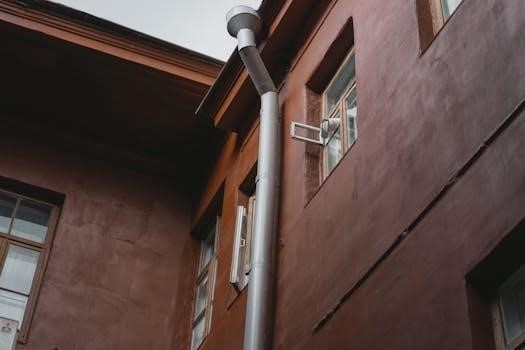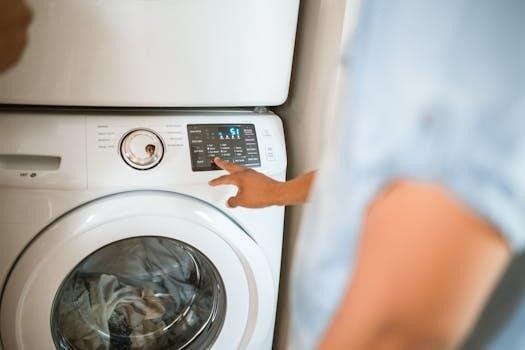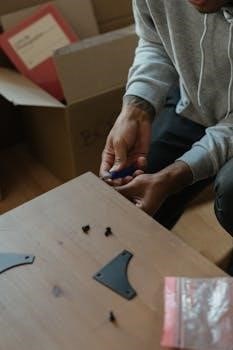PleurX Drainage System Overview
The PleurX drainage system is designed for managing fluid buildup in the chest or abdomen, offering a way to drain fluids at home․ It includes a catheter placed under the skin and a vacuum bottle for drainage․ This system aims to reduce the need for frequent hospital visits, and help patients manage their fluid build up safely and more comfortably․

Purpose of PleurX Drainage
The primary purpose of the PleurX drainage system is to alleviate the discomfort and symptoms associated with recurrent fluid accumulation, known as pleural effusions in the chest or ascites in the abdomen․ This fluid buildup often results from various medical conditions, including cancer, heart failure, or liver disease․ The PleurX system offers a practical solution by enabling patients to drain this excess fluid at home, thereby reducing the need for repeated hospital visits for procedures like thoracentesis or paracentesis․ This home-based management not only enhances patient comfort but also provides a greater sense of control over their condition․ Additionally, the PleurX system aims to improve the patient’s quality of life, allowing them to perform daily activities with less discomfort and inconvenience․ The use of the PleurX system is also to deliver medications like talc or bleomycin for chemical pleurodesis procedures․ The system’s overall goal is to provide an effective and convenient way for patients to manage their fluid buildup and improve their overall well being․
Indications for PleurX Catheter Use
The PleurX catheter is primarily indicated for patients experiencing recurrent pleural effusions or malignant ascites; Pleural effusions refer to the buildup of fluid in the space surrounding the lungs, while ascites denotes fluid accumulation within the abdominal cavity․ These conditions can arise from various underlying causes, such as advanced cancers, congestive heart failure, liver cirrhosis, or certain infections; The PleurX catheter is considered when these fluid accumulations become a recurring problem, causing symptoms like shortness of breath, abdominal distension, and discomfort that significantly impact the patient’s quality of life․ It’s particularly useful when repeated therapeutic procedures like thoracentesis or paracentesis are needed, as the catheter allows for more convenient at-home drainage․ The PleurX system is also used when chemical pleurodesis is required․ The use of the PleurX catheter is suitable for patients who are stable enough to manage drainage at home, after receiving proper training by their medical team․ The main purpose is to reduce frequent hospital visits․

PleurX Drainage Procedure
The PleurX drainage procedure involves connecting a vacuum bottle to the catheter, allowing fluid to be drawn out․ Key steps include proper preparation, connecting the bottle, and following the drainage process․ Post-drainage steps are also important․
Preparing for Drainage
Before initiating the drainage process with the PleurX system, it is critical to gather all necessary supplies and ensure a clean environment․ Begin by thoroughly washing your hands with soap and water for at least one minute, which minimizes the risk of infection․ Next, assemble your drainage kit, which typically includes a vacuum bottle, alcohol pads, and the drainage line․ Open all packaging carefully, avoiding any contamination․ Unfold the blue wrapping provided in the kit and place the vacuum bottle near the wrapping, ensuring the access tip is also laid on the blue wrapping to maintain its cleanliness․ Tear open the alcohol pads to have them readily available for use․ Inspect the catheter site for any signs of infection, such as redness or swelling, and ensure the catheter is not kinked or damaged․ Double-check that the roller clamp on the drainage line is completely closed before proceeding further․ Taking these preparatory steps guarantees a smooth and safe drainage procedure․
Connecting the Drainage Bottle
Connecting the drainage bottle to the PleurX catheter requires careful attention to maintain sterility and ensure a proper seal․ Begin by locating the access tip of the catheter, which should be positioned on the clean blue wrapping you prepared earlier․ Take an alcohol pad and thoroughly cleanse the access tip, ensuring to remove any potential contaminants․ Next, carefully remove the protective cap from the drainage line of the vacuum bottle, being mindful not to touch the exposed connector․ Align the drainage line connector with the access tip of the catheter, and firmly push the two pieces together until you hear a click or feel a secure connection․ This secure connection is essential to prevent leaks and maintain the vacuum needed for drainage․ Once the connection is made, gently pull on the drainage line to confirm it is properly attached․ Be sure that no part of the connector touches any other surface before it is connected․ Avoid touching the end of the catheter and the access tip at all times during this process․ The system is now prepared for drainage․
Step-by-Step Drainage Instructions
Following the connection of the drainage bottle, initiate the drainage process by releasing the clamp on the drainage line․ This action allows the vacuum within the bottle to begin drawing fluid from the chest or abdomen through the catheter․ Observe the fluid flow into the bottle, noting the amount being drained․ It is crucial to adhere to the drainage volume limits advised by your healthcare provider, typically no more than 1000mL from the chest or 2000mL from the abdomen at one time․ During drainage, ensure the catheter remains free of kinks or bends that could obstruct the flow․ If a kink is detected, gently straighten it to facilitate uninterrupted drainage․ The drainage process can take approximately 5 to 15 minutes, depending on the volume of fluid and the vacuum pressure․ Once the drainage is complete, or the maximum volume is reached, clamp the drainage line using the provided slide clamp to stop the flow․ Now, the drainage is complete and the bottle will be prepared for disposal․
Post-Drainage Procedures
After the drainage is complete, it is essential to disconnect the vacuum bottle carefully, making sure to keep the access tip clean․ Dispose of the used drainage bottle and any other single-use items properly, according to local guidelines․ Following the disposal, pay attention to the catheter site, checking for any signs of infection, such as redness, swelling, or unusual discharge․ Ensure that the catheter is not damaged, cut or broken, and if it is, pinch it closed with your fingers․ Replace the dressing around the catheter site, following the instructions provided by your healthcare provider․ This is important to maintain the cleanliness of the site and prevent infection․ If you encounter any difficulties during the post-drainage process, consult the full instructions for use provided with the drainage kit․ If you have any additional questions or concerns, do not hesitate to contact your doctor or nurse․

Safety and Precautions
When using the PleurX system, it’s important to adhere to drainage volume limits; do not drain more than 1000mL from the chest or 2000mL from the abdomen at one time․ Always check for kinks in the catheter, and address them accordingly․
Maximum Drainage Volume Limits
Adhering to specific drainage volume limits is crucial when using the PleurX system to ensure patient safety and prevent complications․ For chest (pleural) drainage, it is essential not to exceed 1000 mL in a single drainage session․ Draining more than this could lead to re-expansion pulmonary edema, a serious condition that occurs when fluid is removed too quickly from the pleural space, causing fluid to rapidly shift to the lungs․ This can result in shortness of breath and other respiratory issues; For abdominal drainage, the limit is typically set at 2000 mL per drainage session, although this may be adjusted by your doctor based on individual conditions and response to treatment․ Exceeding this limit can lead to several issues such as electrolyte imbalance, hypotension, and other fluid-related complications․ The doctor’s instructions should always be followed closely, and the drainage procedure should be performed consistently with the prescribed volume and frequency․ If there are any doubts or concerns, consult with a healthcare professional․ It is important to understand the risks associated with exceeding the volume limits before starting the drainage process․ Always use the PleurX system as directed․
Troubleshooting Common Issues
When using the PleurX drainage system, it’s important to be prepared for potential issues that might arise․ One common problem is a slow or stopped drainage flow, which could be due to a kink or bend in the catheter; always check for any visible obstructions or kinks and straighten them․ If the catheter appears damaged, cut, or broken, the catheter should be pinched closed between the fingers and a new drainage kit should be used․ Another issue can be a clogged catheter, which could require flushing as directed by a healthcare professional or doctor․ If you notice any signs of infection such as redness, swelling, pain, or discharge at the insertion site, notify your healthcare provider immediately․ Always ensure that the connections between the catheter and drainage bottle are secure to prevent leaks․ If the vacuum bottle is not filling as expected, make sure the roller clamp is fully open and the vacuum seal is intact․ Finally, if you experience any discomfort or unusual symptoms during the drainage process, stop immediately and consult a healthcare provider for further guidance and support․ Always keep the instructions for use available for reference․

PleurX Catheter Care
Proper care of the PleurX catheter is essential to prevent infection and maintain its functionality․ This includes regular dressing changes, checking for kinks, and inspecting the catheter for damage․ Following proper cleaning instructions is also necessary․
Dressing Changes
Changing the dressing around your PleurX catheter is a crucial part of your home care routine․ This process helps to keep the insertion site clean and free from infection․ You will need to gather all the necessary supplies before you start, including a new dressing, alcohol pads, and any other items recommended by your healthcare provider․ It is important to begin with clean hands, washing them thoroughly with soap and water for at least one minute․ Gently remove the old dressing, taking care not to pull on the catheter․ Inspect the site for any signs of redness, swelling, or discharge․ Clean the area with alcohol pads, moving in a circular motion from the inside out․ Allow the site to air dry completely before applying the new dressing․ Secure the dressing properly, ensuring that it covers the entire insertion site, and that the catheter is not kinked or pulled․ Follow the instructions provided by your healthcare provider or the manufacturer of the dressing kit․
Catheter Maintenance and Inspection
Maintaining and regularly inspecting your PleurX catheter is essential for its proper function and to prevent complications․ You should check the catheter daily for any signs of damage, such as cuts, breaks, or kinks․ If you notice a kink, gently straighten it out to ensure proper flow․ It’s also important to verify that the catheter is not being pulled or twisted, as this can cause discomfort or damage․ The insertion site should be checked for any redness, swelling, or discharge, and if noticed, this needs to be reported to your healthcare provider․ Ensure that the dressing is always clean and dry, and change it as instructed․ Avoid applying any creams, lotions, or powders directly to the insertion site, unless directed by your doctor․ When not in use, ensure the catheter is secured with a dressing or tape to avoid accidental pulls or snags․ If you have any concerns or notice any abnormalities, contact your healthcare provider immediately․ Adhering to this routine will help keep the catheter functioning effectively and safely․
